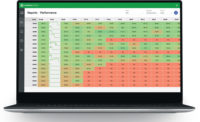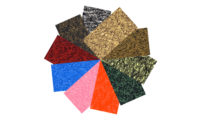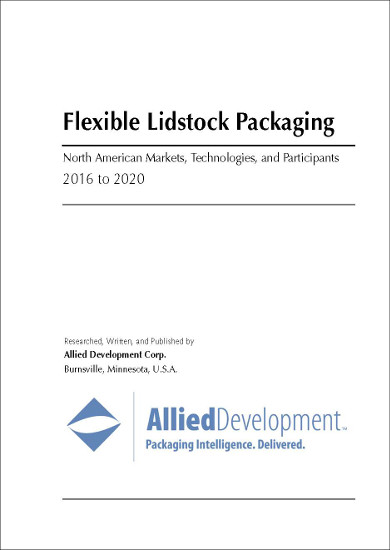Within an industrial park on the outskirts of downtown Columbus, Ohio sits a quarter-mile long, 100,000 square-foot facility that produces hundreds of millions of packages each year. That’s about 350 million packages, to be exact, and the company running the show is Atlapac, a toll, or contract, converter.
Atlapac didn’t get to this point overnight. In fact, the company is about 30 years in the making, with its roots dating back to the mid-1980s when James Staeck purchased a small Columbus-area bag-maker. Atlapac was born, but its footprint was very, very small. It operated out of a garage and had five Simplex machines – only two of which were functional – to produce cellophane bags to sell to candy shops. As time went on, Atlapac acquired several more area companies. It became a master distributor for an importer of ziplock bags. Eventually, it purchased a polybag machine that also applied the zipper, which enabled Atlapac to move into producing reclosable and custom packaging.
Atlapac kept accumulating equipment, purchasing more Simplex machines and eventually purchased a high-speed crimp machine to make cellophane bags faster. In the late 1990s, it got into pouch making – and that’s when business really took off. As the company grew, Atlapac moved out of its original garage facility and into a 10,000-square-foot building. After it outgrew that, it moved to its current location, which was originally only about 20,000 square feet. Today, various expansions have moved that facility in size to the 100,000-square-foot mark. About 90 employees work across its 7 pouch lines, 3 Inno-lok lines, 5 high-speed back-seam machines and 100 Simplex machines (though only about 27 are run).
Today, Atlapac’s business model consists of three main pillars: toll converting, cellophane bag production and stock bags.
Toll Converting
Atlapac is perhaps best known for its toll converting, which consists of partnering with flexible packaging converters to perform specific services other than printing and laminating. The company entered this arena in the mid-1990s, around the same time that it added pouch making to its repertoire, and presently this accounts for about half of its total business.
“Our pitch is ‘we’ll be the experts at bag and pouch making, you be the experts at printing,’” says Stuart Staeck, Atlapac CEO. “It’s a capital intensive industry we’re in, so spend your money improving your printing, we’ll spend ours improving pouch making and bag making. We partner up – it’s worked out well.”
Paul Unrue, Atlapac president, estimates that the company works with about 25 total converters to produce packages for brands that you can find in every major retailer – from Walmart and Costo all the way to Dollar General.
“We’re a transparent partner in all of these companies,” he says. “We’re part of all these companies – we’re an extension of their capabilities.”
And while Atlapac has to be confidential in nature when it comes to their partnerships with converters, that doesn’t stop it from innovating and investing in this pillar of its operations. In 2015, it added the capability of putting Child-Guard sliders on its packaging, something that Unrue expects to really increase in popularity in 2016 and beyond. More recently, Atlapac added a B&B pinch bottom line with fold and glued bottom capability, making it the first true toll converter to operate such in North America.
“Converters need to have low scrap, high throughput – bigger, better, faster,” Unrue says. “We’re at the tail end of your package, but we’ll be involved in the whole process to execute delivery. Converters are being pushed, not just for price, but (for) low timelines. We’re with them on that.”
Cellophane Bags & Stock Bags/Pouches
“It’s an old-school package, but it’s still a desirable package,” Staeck says of cellophane bags.
How old-school? Consider the fact that the Simplex machine that Atlapac still uses to produce a large portion of these bags hasn’t been built in some 30-40 years. (Atlapac has still made an effort to acquire them over the years for parts, hence only 27 of its 100 Simplex machines running today.)
And as old-school as it may be, it’s an important part of Atlapac’s business – and an important part of its history.
“We started out in the 80s just driving around calling on candy shops,” Staeck says. “As time went on, we found some large catalog people. That really changed our approach. Instead of UPS-ing out a lot of boxes to various locations to end users, we just make a concerted effort to work with the larger catalog people.”
Today, Atlapac makes about 350,000 cellophane bags per day, about 100 million per year – good enough to constitute about 25 percent of its total business.
The third main wing of Atlapac’s business is its stock side.
Present and Future
New machines aren’t the only way Atlapac is investing. Recently, its office area underwent a half-million dollar renovation to update and improve its interior.
“Whenever we wanted to improve the office, we’d buy a machine,” Unrue says. “And that’s great – it does help a lot. It raised our level of professionalism. But there’s a balancing act in packaging. We want to look very high-end, professional, clean, food-grade and be good at what we do.”
As for the future, Atlapac is well suited to adapt to the needs and requests of the converters it works with. And some of these changes could be coming sooner rather than later.
“(These innovations) are in Europe now, they were in Japan 10 years ago – there is all kinds of technology coming, from shaping a package, tactile feel, spouting. We have projects coming next year in mid-summer to fall that are brand new to flexible packaging,” Unrue says, using the example of the recent spouted Daisy sour cream package as an example of similar innovation on the horizon. “You’re going to see something totally different.”
Atlapac
(800) 888-7019
www.atlapac.com









